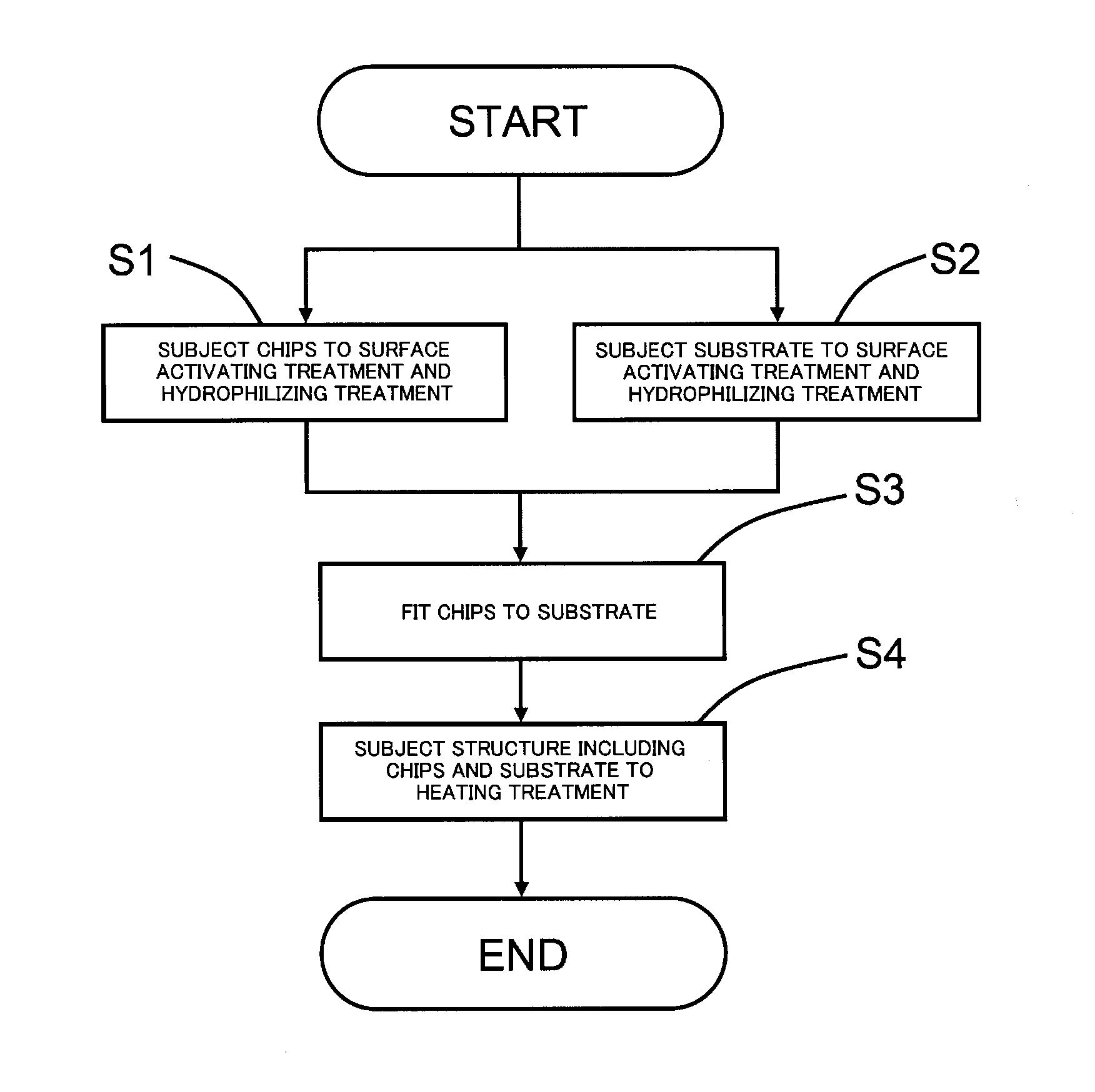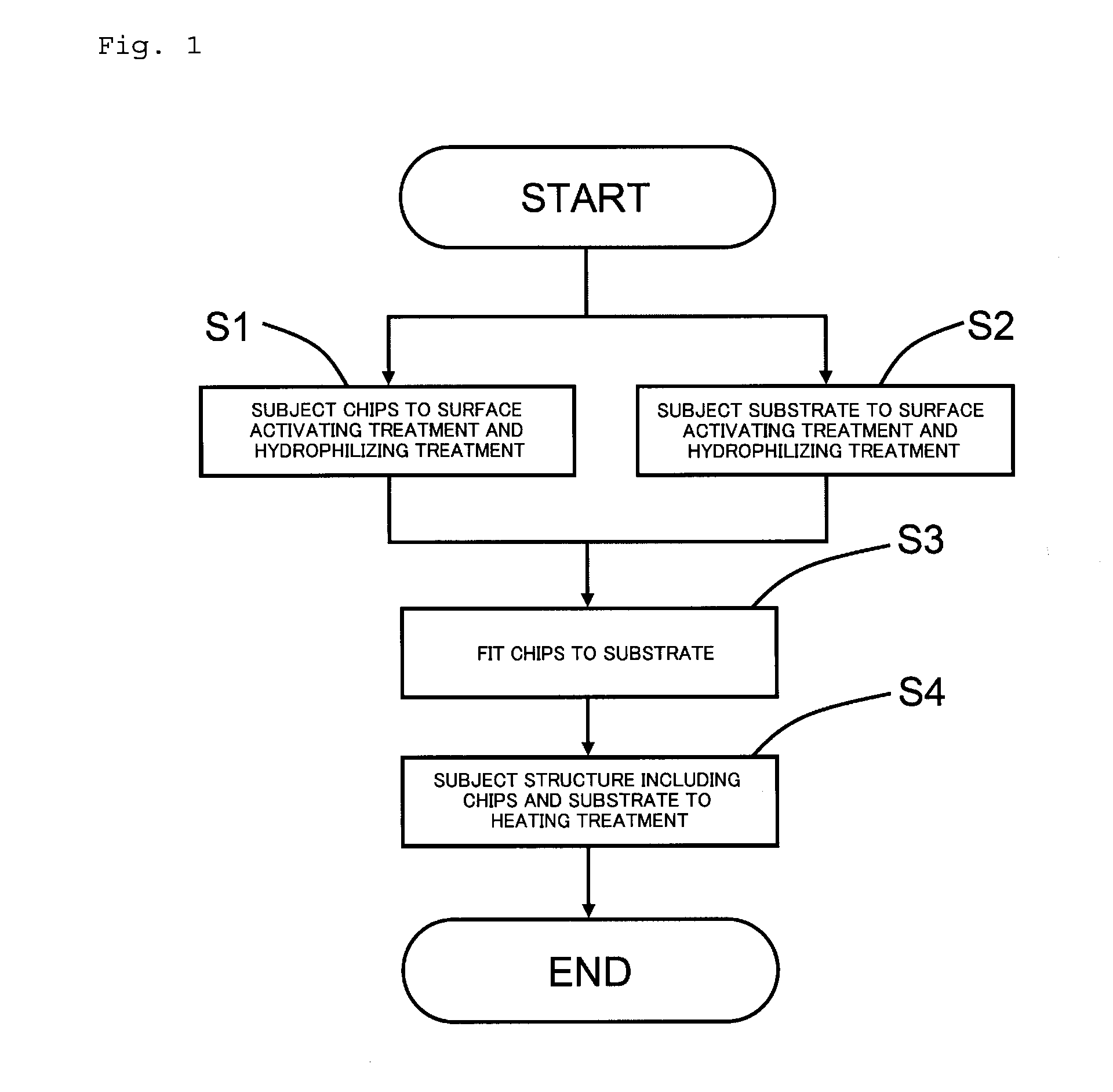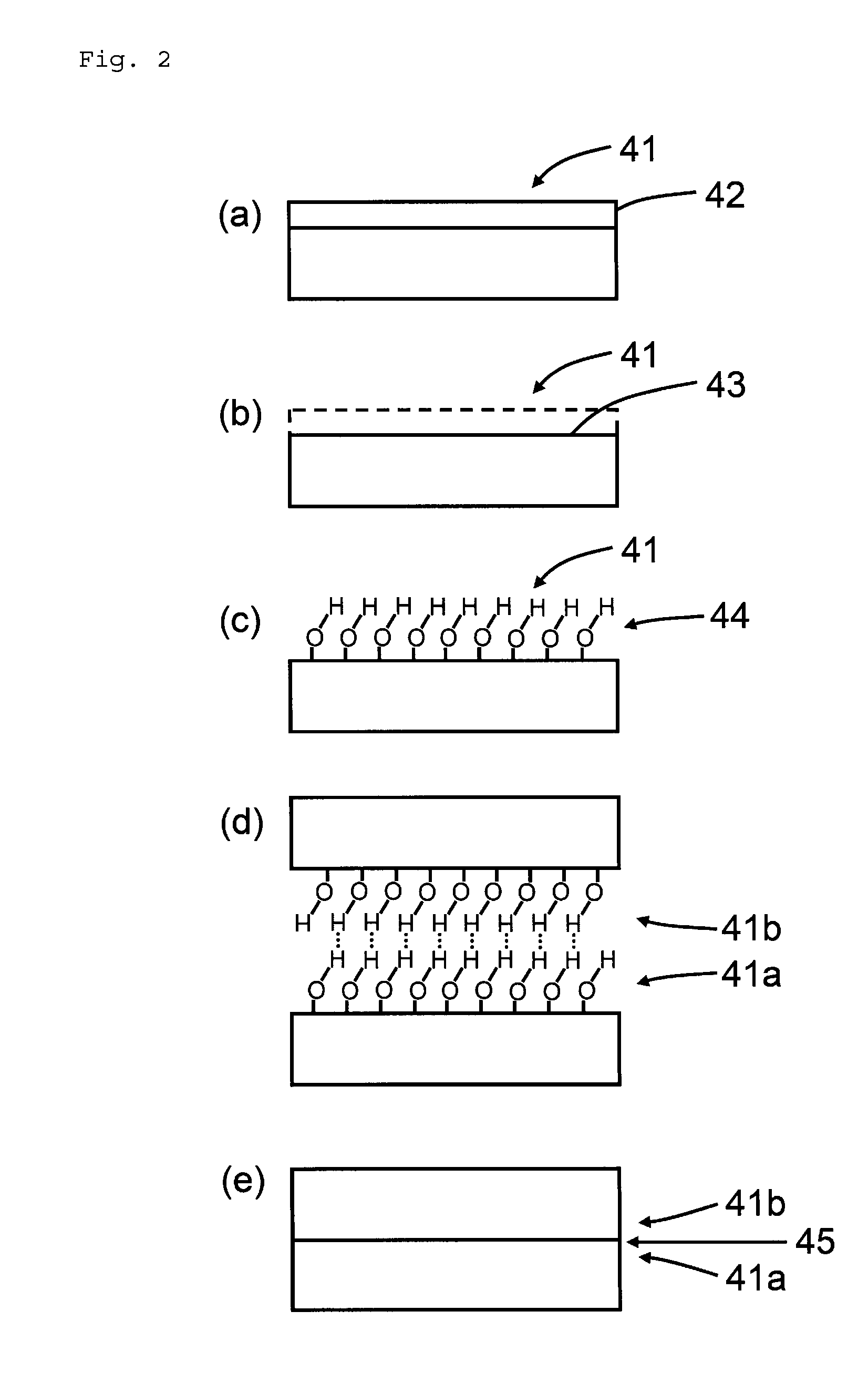Chip-on-wafer bonding method and bonding device, and structure comprising chip and wafer
a chip-on-wafer and bonding surface technology, applied in auxillary welding devices, semiconductor/solid-state device testing/measurement, semiconductor/solid-state device details, etc., can solve the problem of increasing the difficulty of removal flux, increasing the packaging density of chip-mounting, and increasing the minuteness of the microstructure of the bond surface. , to achieve the effect of good electroconductivity, high mechanical strength and high production efficiency
- Summary
- Abstract
- Description
- Claims
- Application Information
AI Technical Summary
Benefits of technology
Problems solved by technology
Method used
Image
Examples
first embodiment
1.1 First Embodiment
[0098]FIG. 1 is a flowchart showing a method according to a first embodiment of the present invention for bonding chips to a substrate.
[0099]In step S1, surfaces of plural chips to be bonded to a substrate (hereinafter referred to as chip-side-bond-surfaces) are subjected to surface activating treatment and hydrophilizing treatment. The chip-side-bond-surfaces each include one or more regions made of a metal (hereinafter referred to as metal region(s)).
[0100]In step S2, about the substrate to which the chip-side-bond-surfaces are to be bonded, its surface regions corresponding to the respective chips (hereinafter referred to as bond portions) are wholly subjected to surface activating treatment and hydrophilizing treatment.
[0101]Herein, a description is made about each of the surface activating treatments in the present invention.
[0102]A surface layer 42 containing respective oxides of various substances, pollutants (impurities) such as an adhering organic substa...
second embodiment
1.2 Second Embodiment
[0237]FIG. 10 is a flowchart showing a method for bonding chips in a multilayered form onto a substrate according to a second embodiment. A processing from step S11 to S13 for fitting chips of a first layer, out of these chips, onto a substrate is identical with step S1 to S3 in the first embodiment. Thus, any description thereabout is omitted herein.
[0238]In the first embodiment, chips corresponding to a single layer are fitted onto a substrate. However, in the second embodiment, chips corresponding to plural layers are fitted onto a substrate. In this point, these embodiments are different from each other. In the second embodiment, the chips in the multilayered form are fitted onto the substrate; thus, the chips laminated into a multilayered form each have a structure having a first bond surface corresponding to any one of the chip-side-bond-surfaces in the first embodiment, and a second bond surface positioned on the rear side of the first bond surface.
[0239]...
modified examples
[0312]In conventional bonding units, their moiety corresponding to the bonding constitution 33 can be shifted in the horizontal direction or the in-plane direction (XY directions) parallel to the front surface of a substrate along a beam of a cantilever structure supported in the horizontal direction inside each of the bonding units. However, the cantilever structure is low in rigidity, so that the cantilever is bent in the Z direction when force is applied thereto at the time of fitting any chip. Thus, when the chip and the substrate contact each other, force applicable thereto is very much limited. Usually, only force of at most about 2 to 3 kgf (kilogram force), i.e., about 20 to 30 N can be applied. In conventional NCP-bonding or bump-solider-bonding methods, chips are merely pre-bonded at one time with resin or flux, and thus a pressuring force of 20 to 30 N is sufficient. Even when solder-bonding is attained in the spot, a large pressuring force is unnecessary since solder is ...
PUM
| Property | Measurement | Unit |
|---|---|---|
| temperature | aaaaa | aaaaa |
| pressure | aaaaa | aaaaa |
| pressure | aaaaa | aaaaa |
Abstract
Description
Claims
Application Information
 Login to View More
Login to View More - R&D
- Intellectual Property
- Life Sciences
- Materials
- Tech Scout
- Unparalleled Data Quality
- Higher Quality Content
- 60% Fewer Hallucinations
Browse by: Latest US Patents, China's latest patents, Technical Efficacy Thesaurus, Application Domain, Technology Topic, Popular Technical Reports.
© 2025 PatSnap. All rights reserved.Legal|Privacy policy|Modern Slavery Act Transparency Statement|Sitemap|About US| Contact US: help@patsnap.com



